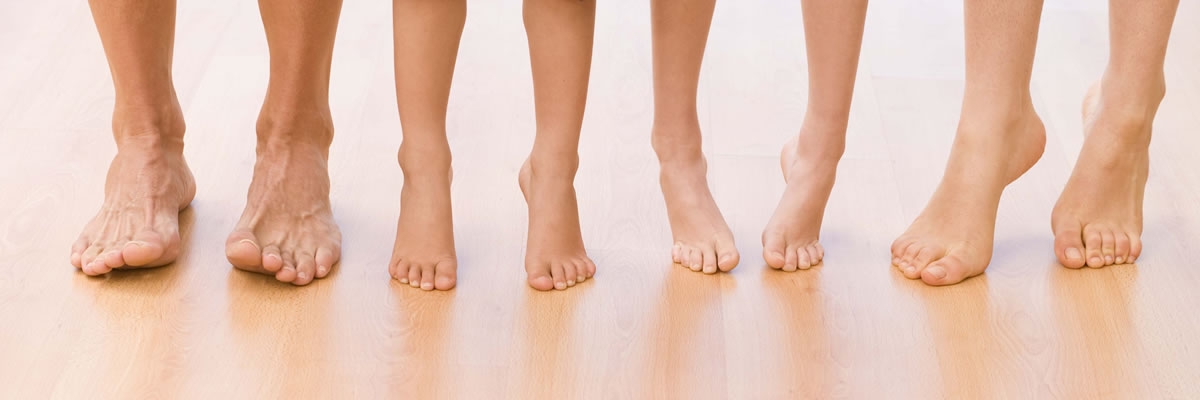Custom Orthotics
What are Orthotics?
Orthotics are shoe inserts that are intended to correct an abnormal, or irregular, walking pattern. Orthotics are not truly or solely “arch supports,” although some people use those words to describe them, and they perhaps can best be understood with those words in mind. They perform functions that make standing, walking, and running more comfortable and efficient, by altering slightly the angles at which the foot strikes a walking or running surface.
Doctors of podiatric medicine prescribe orthotics as a conservative approach to many foot problems or as a method of control after certain types of foot surgery; their use is a highly successful, practical treatment form.
Orthotics take various forms and are constructed of various materials. All are concerned with improving foot function and minimizing stress forces that could ultimately cause foot deformity and pain.
Foot orthotics fall into three broad categories: those that primarily attempt to change foot function, those that are primarily protective in nature, and those that combine functional control and protection.
Rigid Orthotics
The so-called rigid orthotic device, designed to control function, may be made of a firm material such as plastic or carbon fiber, and is used primarily for walking or dress shoes. It is generally fabricated from an impression of the individual foot. The finished device normally extends along the sole of the heel to the ball or toes of the foot. It is worn mostly in closed shoes with a heel height under two inches. Because of the nature of the materials involved, very little alteration in shoe size is necessary.
Rigid orthotics are chiefly designed to control motion in three major foot joints, which lie directly below the ankle joint. These devices are long lasting, do not change shape, and are usually difficult to break. Strains, aches, and pains in the legs, thighs, and lower back may be due to abnormal function of the foot, or a slight difference in the length of the legs. In such cases, orthotics may improve or eliminate these symptoms, which may seem only remotely connected to foot function.
Soft Orthotics
The second, or soft, orthotic device helps to absorb shock, increase balance, and take pressure off uncomfortable or sore spots. It is usually constructed of soft, compressible materials, and may be molded by the action of the foot in walking or fashioned over a plaster impression of the foot. Also worn against the sole of the foot, it usually extends from the heel past the ball of the foot to include the toes.
The advantage of any soft orthotic device is that it may be easily adjusted to changing weight-bearing forces. The disadvantage is that it must be periodically replaced or refurbished. It is particularly effective for arthritic and grossly deformed feet where there is a loss of protective fatty tissue on the side of the foot. It is also widely used in the care of the diabetic foot. Because it is compressible, the soft orthotic is usually bulkier and may well require extra room in shoes, or prescription footwear.
Semirigid Orthotics
The third type of orthotic device (semirigid) provides for dynamic balance of the foot while walking or participating in sports. This orthotic is not a crutch, but an aid to the athlete. Each sport has its own demand and each sport orthotic needs to be constructed appropriately with the sport and the athlete taken into consideration. This functional dynamic orthotic helps guide the foot through proper functions, allowing the muscles and tendons to perform more efficiently. The classic, semirigid orthotic is constructed of layers of soft material, reinforced with more rigid materials.
Orthotics for Children
Orthotic devices are effective in the treatment of children with foot deformities. Most podiatric physicians recommend that children with such deformities be placed in orthotics soon after they start walking, to stabilize the foot. The devices can be placed directly into a standard shoe, or an athletic shoe.
Usually, the orthotics need to be replaced when the child’s foot has grown two sizes. Different types of orthotics may be needed as the child’s foot develops, and changes shape.
The length of time a child needs orthotics varies considerably, depending on the seriousness of the deformity and how soon correction is addressed.
Other Types
Various other orthotics may be used for multidirectional sports or edge-control sports by casting the foot within the ski boot, ice skate boot, or inline skate boot. Combinations of semiflexible material and soft material to accommodate painful areas are utilized for specific problems.
Research has shown that back problems frequently can be traced to a foot imbalance. It’s important for your podiatric physician to evaluate the lower extremity as a whole to provide for appropriate orthotic control for foot problems.

